How Seed Starters Started
This article by Sue Theriualt first appeared in WildfloraRI, Spring 2022.
One of the many ways RIWPS encourages the use of native plants in the landscape is by providing access to quality and affordable offerings through our May, June, and August sales. To ready the inventory for these sales, two groups of RIWPS volunteers are gathering at our two greenhouse locations, one on the East Bay and one on the West Bay. The groups are aptly named Seed Starters East (SSE) and Seed Starters West (SSW).
As a SSE volunteer and a Rhode Islander, I had to chuckle when I realized it felt like a big deal to be crossing three bridges to get to Wakefield, on the eve of a blizzard, to talk to three long-time volunteers of SSW. I was warmly welcomed into Cathy King’s home and offered hot tea and cookies with her, Pat Cahalan, and Helen Drew, with 20, 15 and 10 years of service respectively
I learned that SSW’s history has been more transient than SSE’s. SSE has had the good fortune to be at Plane View Nursery in Portsmouth for the last thirty years, while SSW, which began three years later in 1994, has been at least four different locations. Memories are fuzzy, but all remembered Betty Salomon and Betsy Keiffer, the duo that began SSW and led it for its first ten years. (Betty was also a founding member and the first Vice President of RIWPS). The two began SSW to appeal to volunteers who did not want to drive to Portsmouth or who worked during the week and preferred to meet on Saturday mornings. Cathy recalled how Betty and Betsy would drive around RI looking for wild plants on the roadsides to collect seed because they loved to experiment with growing plants.
URI professors and RIWPS members William Eddleman and Brian Maynard (RIWPS’ current Treasurer) and Propagation Chair Brian Core helped situate SSW at their first greenhouse at URI’s East Farm. In its early years SSW met almost year-round, and over the winter members placed the plants outside to mimic their natural growing conditions.
After its first decade, SSW lost its home as URI grew and needed its East Farm greenhouse. “Instead of driving around looking for seeds they were driving around in search of greenhouses,” Cathy said. After a short-lived stay at a commercial nursery, SSW ended up back at URI, this time in a greenhouse run by the Agronomy Department. URI’s Richard Casagrande, Rebecca Brown and Carl Sawyer (a RIWPS lifetime-service award recipient) helped to get SSW up and running in their third location. But as URI’s needs grew, SSW again had to relocate, this time to their current location—a huge greenhouse atop a high, windy hill at the home of a member and former commercial grower, Mary Pezza.
By this time Karen Asher (a former RIWPS President) was leading SSW. She recalled the moment she was converted to native plant gardening. She had moved from an apartment in New York City, where she had no gardens, to a home in Rhode Island. “I had no clue what to do with the yard. So, I went to a RIWPS-sponsored talk by Judy Ireland, the landscape architect who designed the award-winning RIWPS displays at the annual RI Flower and Garden Show for many years, and I thought what she was saying made so much sense. Her talk grabbed me and I never looked back!”
But how did Karen find Mary Pezza and a new home for SSW? “It just so happened that I was wandering around in the woods, botanizing, on a property that just happened to be next to hers. I saw this path that led across a bridge, and I wondered where it went. I knew I was on private property, but I was just so curious I couldn’t stop myself!” SSW is lucky she pursued the path because it led to a gorgeous property with two empty greenhouses!
As a local Town Councilwoman, Karen knew a lot of people, and eventually she was introduced to the owner of the greenhouses, Mary Pezza. “She is charming, lovely and wonderful.” With a handshake, SSW had a new home. Karen emphasized, “Around here shaking hands means something.” Helen Drew described Mary and the location. “Mary is extremely generous. We have a safe greenhouse, a shed for supplies, water, and a fenced-in outdoor space. She even lets us use the pots left over from her nursery business.”
Helen Drew, with her clear blue eyes and long white hair, has been the leader of SSW since 2012. She is quick to point out that it is not a hierarchical group but rather a team where responsibilities such as keeping track of inventory and placing orders are handled by different members. Pat and Cathy agreed fondly that Helen is a diplomat and skilled administrator who holds the group together.
Helen described the current operation: The SSW team runs the spring plant sale, currently held on the Saturday before Mother’s Day. For the last two years it’s been held in Saunderstown at Casey Farm’s Annual Spring Sale. The group also grows plants for RIWPS’ June sale. They gather during the winter to make plant lists and find sources and then by March begin twice-a-week work sessions that run from March to early June. Work sessions are scheduled for Tuesday and Saturday mornings. Helen said, “RIWPS has done a good job of attracting younger people who work during the week, so we’ve added a Saturday work day.” As she looked around the table she laughed, “Let’s face it, we are not getting any younger!” Then she commented on how her hair had turned from gray to white.
Helen continued, “We had a lot of new people sign up to volunteer just before the pandemic, so we are hoping for a good turnout this year.” The work consists of potting up plants donated by volunteers who dig plants from their property as well as plugs the group buys from commercial growers. Still other volunteers grow plants from seed in their yards. A greenhouse schedule ensures that a volunteer heads to the greenhouse each day to tend and water the plants.
Helen reflected on the evolution of the May sale over the last ten years. “It was very modest in the beginning. We had a space at the URI Master Gardeners’ Sale and would set up our tables under trees raining down apple blossom petals. In the early years we would take anything that people donated, native or not, and we advertised it as a perennial sale. Over the years it has grown into something much larger and now comprises about 1,000 plants, all native.”
After ten years of leading SSW Helen is retiring, turning the reins over to the very able and enthusiastic Gayle Anderson.
The composition of both the May sale at Casey Farm’s Spring Sale and the June sale at URI’s East Farm is now limited to species native to Rhode Island or to the larger area of Ecoregion 59 (Northeastern Coastal Zone) of which RI is a part. The May sale focuses on spring ephemerals and early bloomers but has also expanded to include shrubs and some of the later-blooming perennials
I could see the bottom of my tea cup in the dimming light as the sun set. I thought of the damp roads I had crossed over on and knew it was time to get back before ice formed. Though I knew there were so many other people and parts of the SSW story to be learned, I at least had a snapshot to share. The past grounds us for the future and inspires us as we try to follow in the footsteps of the talented and committed volunteers at our two Seed Starters groups. I also left wondering at what point my own hair might turn from gray to white. After tea with these women, I will wear it with pride.
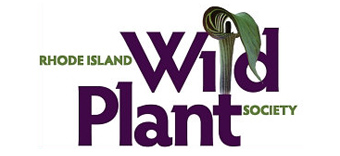
 from WildfloraRI Spring 2022
from WildfloraRI Spring 2022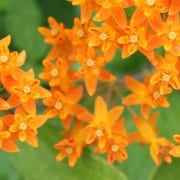


 Marvin DeJong
Marvin DeJong








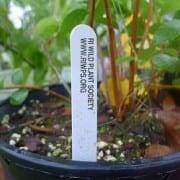

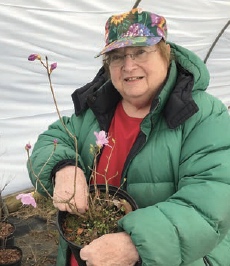


 The word “meadow” brings to mind fields of open grassland, dappled with wildflowers bending to the wind in rolling waves across the horizon. Those inviting images frequented gardening publications twenty-five years ago, about the time I was figuring out my meadow. I was all in, transfixed by a patch of grass that hearkened back to the bluestem prairies of my native Oklahoma.
The word “meadow” brings to mind fields of open grassland, dappled with wildflowers bending to the wind in rolling waves across the horizon. Those inviting images frequented gardening publications twenty-five years ago, about the time I was figuring out my meadow. I was all in, transfixed by a patch of grass that hearkened back to the bluestem prairies of my native Oklahoma. Managing succession by methodically allowing a meadow to evolve into an “old field” will add beauty and environmental value. Volunteers will appear, adding colors, textures, and spatial patterns. Evening primrose, cinquefoil, cow vetch, Queen Anne’s lace, red clover, yarrow, chicory, and fall asters were welcome in my meadow— lots of flowers free of charge! Selectively controlling volunteer wildflowers to favor native species and desired locations refines the natural process. Planting additional natives that can survive competition from grasses will add further visual interest.
Managing succession by methodically allowing a meadow to evolve into an “old field” will add beauty and environmental value. Volunteers will appear, adding colors, textures, and spatial patterns. Evening primrose, cinquefoil, cow vetch, Queen Anne’s lace, red clover, yarrow, chicory, and fall asters were welcome in my meadow— lots of flowers free of charge! Selectively controlling volunteer wildflowers to favor native species and desired locations refines the natural process. Planting additional natives that can survive competition from grasses will add further visual interest. Warm-season grasses include switchgrass, broomsedge bluestem, Indian grass, big and little bluestem. They dominated the vast prairies of the Midwest, and some are found in New England, often where soils are nutrient-poor and dry. In my experience switchgrass and big bluestem are the best species for planting where there is strong competition from established cool- season grasses. But all warm-season grasses do well in well-drained, nutrient-poor soils, such as upper edges of salt marshes, roadsides, and South County’s glacial moraine.
Warm-season grasses include switchgrass, broomsedge bluestem, Indian grass, big and little bluestem. They dominated the vast prairies of the Midwest, and some are found in New England, often where soils are nutrient-poor and dry. In my experience switchgrass and big bluestem are the best species for planting where there is strong competition from established cool- season grasses. But all warm-season grasses do well in well-drained, nutrient-poor soils, such as upper edges of salt marshes, roadsides, and South County’s glacial moraine.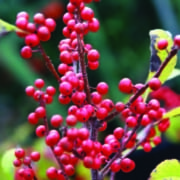

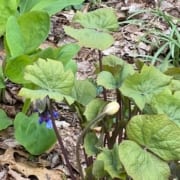 Judy Ireland
Judy Ireland